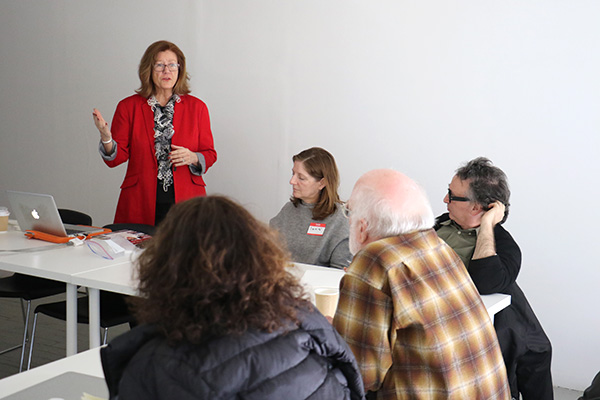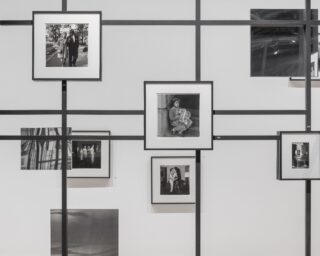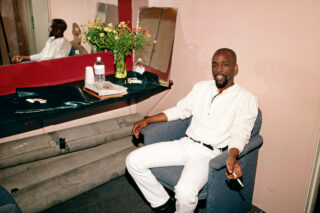“Breaking the Light Barrier” Workshop at Aperture Gallery
Rick Sands’s Aperture workshop “Breaking the Light Barrier,” created for photographers who want to master lighting techniques, took place at Aperture Gallery from August 29 to September 3. Aperture workshops bring students, professionals, and amateurs together with leading photographers working in a variety of fields and genres for intensive educational experiences. The next workshop at Aperture is “Mark Klett: Traveling the Devil’s Highway—Exploring the Borderlands of the Sonoran Desert, Arizona.”
Over the course of six days, workshop participants collaborated with master illuminator Rick Sands to learn how to see, understand, and realize various lighting scenarios. For nearly fifteen years, Sands, a film technician, has created elaborate lighting for the narrative photographs of artist Gregory Crewdson. His portfolio also includes thirty-five theatrically released motion pictures with directors such as Steven Spielberg and Francis Ford Coppola, forty-seven television movies, and countless one-hour television episodes. The class worked under a wide range of conditions (day as well as night, interior as well as exterior), and studied separation through use of contrast via intensity and color. Sands discussed philosophies of lighting techniques and shared his insight on the five properties of light, and how they interrelate: quality, quantity, color, shape, and direction.
The workshop was a mixture of lighting theory and hands-on practical exercises. Aperture’s Chelsea gallery was turned into a studio for participants in which they could arrange various lighting scenarios. On the second day of the workshop students were challenged to recreate a scene with complex lighting. Each participant brought in found images and worked in teams to reproduce the lighting set-up while employing techniques discussed the previous day. Some Aperture staff served as models; in the slideshow above, look out for examples of student work from the workshop and see how the gallery was transformed.


























